Last Friday as I finished up my frozen adventures in Finland, I had a couple of hours after my work meetings wrapped up before my flight back home. So rather than spend that time hanging out in the Helsinki airport (which, is actually quite nice), I got a brief tour of Suunto’s headquarters and manufacturing facility, as well as a bit of time for a brief chat. Then, I swung around the corner a few kilometers away to meet up with the Omegawave folks and get a quick hands-on demo of their platform. And of course, in order to keep things interesting, I’ll finish the post with a bit of a Reindeer story. With that – let’s get into things.
Suunto:
Now, unlike some of my past ‘Behind the Scenes’ posts, this one was far shorter. In most other cases, I’m spending an entire day with the company on premises, meeting with with multiple product teams and usually doing so scattered about the building. In this case, I spent only about 75 or so minutes with Suunto – thus, covering a whole lot less ground. Fear not though, I think as the weather warms I’ll head back up and get a more in-depth look at stuff – perhaps combining a number of other Finnish companies (such as Polar as well) into a road-show of sorts.
In the meantime, let’s step out of the flippin’ cold weather and into the lobby…literally:
Inside the lobby they’ve got all of their various current-generation products displayed. They’re arranged into product segments: Diving, Ambit, Compasses, and then non-Ambit (Core/Vector/Elementum/Quest/M-Series).
Ultimately, these same segments align to much more than display cases within the lobby, but also to how Suunto manufactures products. But before I headed onto the factory floor I headed back to watch a short 4 minute video. The video was designed to basically be a quick primer into some of their manufacturing processes and an overview of the facility. Think of it sorta like the pre-flight safety video…except with motivational scenes and music tracks.
Along the way to watch the the video I passed a display case with a collection of compasses from Suunto’s past. After all, that’s where Suunto started 78 years ago – making liquid filled compasses. The right hand side of the case is much more recent pieces of hardware from various Suunto sports teams.
After the emotional and uplifting manufacturing video was presented, we headed over to the manufacturing floor. Before we entered we first donned coats and checked how our shoes faired with static electricity. Half of ours failed, and thus we would then have to walk outside the yellow lines within the factory floor. No worries though, the distance between build area and the yellow lines was no more than a meter or so in most cases.
Now, once we stepped through the door to your left I wasn’t permitted to take any photos. This was mostly a byproduct of everything being arranged at the last minute. Hopefully in the future if I make it back up there I can do a full factory floor walk-through like I’ve done with other companies. Obviously, like other companies I simply don’t take photos of things that they say is confidential – common in factory settings.
For now though, let me walk past a slew of observations during my brief tour of the manufacturing facility:
- First, everything that Suunto makes is built by hand within this single facility in Helsinki (well, technically the city of Vantaa). All watches, dive computers, compasses – you name it. No matter where it goes in the world. It starts here. The actual factory floor is perhaps half a football field in length/width.
- Each product has a separate build area. The Ambit was best I could tell the biggest line there. Each line consists of a pod-style design – kinda like putting three stand-up desks next to each other. Those three desks form a station where in regular demand times a single worker builds the entire watch across the three desks. In busier times (such as during an impending product launch), each pod gets up to three people working in concert together to build a watch (thus tripling throughput).
- Everything is built by hand. There were no robots putting together watches, compasses or dive computers. Simply humans. Step by step they’d piece together a watch, working one watch at a time until it was complete. They’d then take the watch and package it up as well in the final boxes. This includes any accessories (such as a heart rate strap). The finished boxes were then stacked on a rolling metal cart.
- Accessories such as heart rate straps and smaller components such as chipsets aren’t made onsite – but rather come from Asia, which is commonplace in the industry. Effectively everything about the facility here was about final assembly. Though, some parts are printed in the building.
- Once the cart had a sufficient quantity of watches on it (~100 units) they’d be rolled over into the stock room, which was a portion of the factory building. This stock room kept these ‘bundles’ together (and are also tracked to the employees) – so in the event something was being built incorrectly by an individual, they could know exactly which units were affected quickly.
- The stock room also served as the single distribution point for Suunto products to worldwide dealers. They were boxing up orders when I came through – just ahead of the package pickup time. It was like Santa’s workshop with boxes having addresses on them for all over the world from Europe to US to Asia. In general, Suunto will direct ship to a retailer straight from Finland. No matter if it’s one unit or one hundred units. And that’s what I largely saw. The orders coming off the printer, for example, were “1 Suunto Ambit2 Black, 1 Suunto Quest Yellow”, shipped straight to a small retailer in the US.
- In one example they noted how someone could walk into a running shop in Germany on Wednesday morning and order an Ambit with their retailer which places the order the same morning with Suunto. That shipment would leave that afternoon to Europe and would generally arrive the next morning at the retailer and the customer could have it before lunch. Impressive speed.
- In looking at manufacturing capacity, they run the facility in two shifts continuously. As noted above, they tend to ‘burst’ and increase capacity through additional employees for new product launches. The majority of the employees are cross-trained on different unit builds. Usually they start off with easier products and move their way up to more complex products. Ultimately though, this gives them flexibility to re-allocate employees to different lines to meet demand.
- Perhaps one of the coolest machines I saw (actually, one of the few) was the underwater testing rig for the dive computers. The unit looks like a large coffee table perhaps 5” deep and then filled with water with a glass cover that closed down on top of it. It automatically tested approximately 50 dive computers at once to different underwater depths. Each one was then visually validated at various depths (such as 30m deep) while the computer then went through a simulated dive. It was cool seeing every single unit measure precisely the exact same depth.
- Towards the back of the manufacturing floor there was a fenced in area (with non-see-through covers) that held their R&D area from a manufacturing standpoint. This area was not part of the tour.
As I said at the beginning, there’s tons of little observations that are much easier to convey with photos. Plenty of little “ahh…that’s cool”, or “ohh…so that’s how you do it” moments. From a physical station on the factory floor to test compasses to how they test watches for the right internal humidity levels by heating them up and dropping a dot of water on them to check for (lack of) condensation. Or even how they increase the humidity of the facility during the winter to compensate for the dry air to ensure condensation doesn’t happen in other environments later on.
But…those will all have to wait for another day.
After the factory tour floor we spent the remainder of the time talking about the state of the industry and many of the requests that I see from you (readers) – be it on the Suunto line-up or competitors’ lines.
Obviously, like any company out there that intends to stay in business, Suunto is most definitely working on new products. As one might expect, none that they wished to convey as part of this post however. That said, from looking at my top complaints on the product (very few) and their online services, as well as the top complaints I hear about their offerings – I think they are making good progress on addressing those. Some of those tweaks you may see sooner, and some longer down the road. No doubt though, tweaks are coming.
With that – I wrapped up things inside the building and headed back out into the cold.
Omegawave:
A short taxi ride later and I was at the headquarters of Omegawave – housed within a small section on the first floor of a large multistory glass building that serves as a tech corridor incubation house. The building is full of other smaller technology focused companies and startups.
Omegawave makes products that aim to optimize your training and recovery. They do this using an ECG (Electrocardiogram) device that looks mostly like any other heart rate strap. There are some minor differences though in the strap itself, which increase the resolution of the data. For example, in addition to the front sensors typically found on a heart rate strap, the unit also has ones on the sides of your chest. The strap then connects via Bluetooth (legacy) to both iOS and Android apps. Because it’s using legacy Bluetooth there’s no limitations around only Bluetooth Smart compatible devices (newer devices). However, legacy Bluetooth means you get dramatically shorter battery life (a dozen or so hours), compared to a year for BLE products.
But – that doesn’t matter. See unlike a typical HR strap you actually don’t wear this during exercise. Rather, you wear it for a few minutes a day to gather data at rest. Some athletes will measure this at multiple points in a day – such as upon wake-up, before a workout, after a workout, and at the end of the day. So that dozen or so hours lasts quite a long time. And the strap is simply rechargeable when needed.
The goal with the measurements is to take the concept of resting heart rate to a higher level. Many athletes (including myself) take resting heart rate in order to provide a bit of a checkpoint against other training metrics. For example, for me I can usually see quite clearly in my resting heart rate when I’m about to get sick, or when travel fatigue has caught up with me.
Now, Omegawave believes that the resting heart rate data is too variable to be useful. Instead, they believe that by going with data based on heart rate variability (HRV/RR) they can get much higher levels of accuracy on fatigue factors and thereby give you more clear guidance on when to recover and when to push harder. As a result, they note that they are able to predict when an athlete might be more susceptible to movement injuries (such as in basketball) due to the fatigue.
These ‘Cardiac Readiness Elements’ are then plotted against five different metrics to make up an entire picture of what’s going on. A picture that’s apparently so clear that their list of customers – mostly higher end athletes and teams – spans teams in just about every major sporting league out there. NFL, MLS, NHL, Premier League (soccer aka football), US Olympic Committee and others. In fact, while I was there the room next door had a college basketball team from the states getting trained on using the product. In fact, the app includes the ability for coaches to monitor an entire team. So the individual athletes complete their metrics on their own and the coach connects to a cloud service to view metrics across all athletes.
Now, the product is a bit pricey though. It costs $99 for the unit itself, then there’s a $49 annual fee (or it can be paid as a $4 monthly fee). So things add up quickly. Oh, and in case you’re curious about the earlier photo showing the additional sensor wires, that’s for a slightly different product that measures on the forehead instead. For most folks, you’d be using the chest strap method.
Ultimately, I think it’s interesting technology and is something I’ll circle back to later in the spring as they look at newer products in the pipeline.
Airport Reindeer Roasts:
Finally, for those of you less inclined to read about Suunto or Omegawave, I bring you my final ‘meeting’ of that evening – the souvenir shop post-security at the airport. After all, I had to pickup my country magnet. I’m not quite sure how said magnet practice started, but at this point, our fridge is covered with them. Ground rules dictate one magnet per country (generally). Rare exceptions include things like China, or similar large countries with multiple major iconic cities where a secondary city-specific magnet is fully justifiable.
After I had picked out my Finland magnet and paid for it (yes, it included a little reindeer on it), I was walking out of the Finland themed shop when I realized there was a small fridge off the side. This is somewhat common in airport gift shops, and it usually contains some local delicacies. In Paris for example, there’s a cheese shop just after passing the customs booths on the way out. Said cheese shop is sniffable about 100m away.
In the case of Helsinki though, it’s not cheese – but reindeer roasts. The case contained two varieties – lean, and presumably, not so lean. Both varieties were expensive as heck. One kilo was 83€ ($112), so basically $51US per pound. Crazy talk!
Actually, at first I glanced at the sign and assumed it was 8.3€ a kilo, and then I realized it was 10 times that much. I was almost tempted to bring a roast back at 8.3€ – but sure as heck not 83€!
So instead, I took my little couple-euro magnet and boarded the plane. No Rudolph or Prancer for me that day.
Thanks for reading!
–
(Just as a point of housekeeping – neither Suunto nor Omegawave paid for any part of my visit. I was up in Helsinki for an unrelated work thing for my day job and simply stopped by on the way to the airport.)
FOUND THIS POST USEFUL? SUPPORT THE SITE!
Hopefully, you found this post useful. The website is really a labor of love, so please consider becoming a DC RAINMAKER Supporter. This gets you an ad-free experience, and access to our (mostly) bi-monthly behind-the-scenes video series of “Shed Talkin’”.
Support DCRainMaker - Shop on Amazon
Otherwise, perhaps consider using the below link if shopping on Amazon. As an Amazon Associate, I earn from qualifying purchases. It doesn’t cost you anything extra, but your purchases help support this website a lot. It could simply be buying toilet paper, or this pizza oven we use and love.

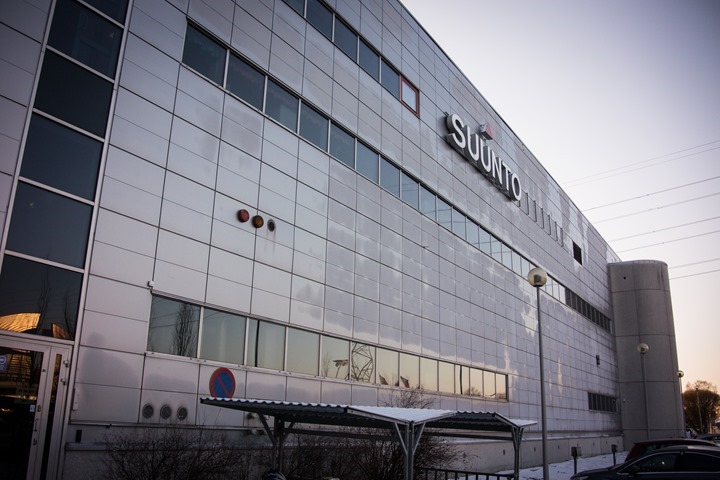
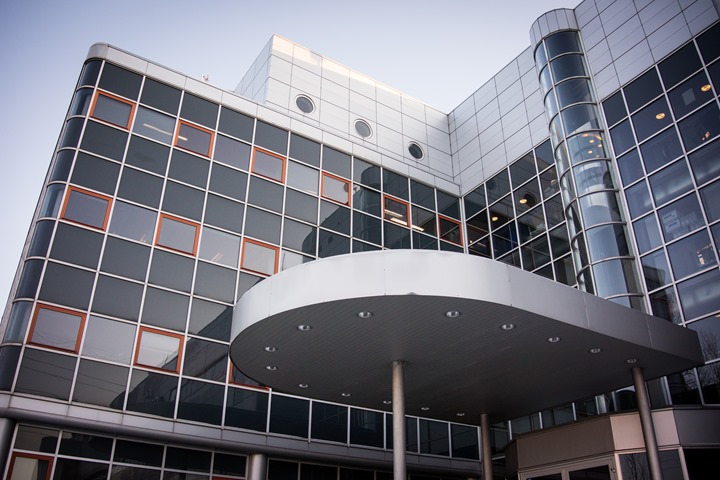
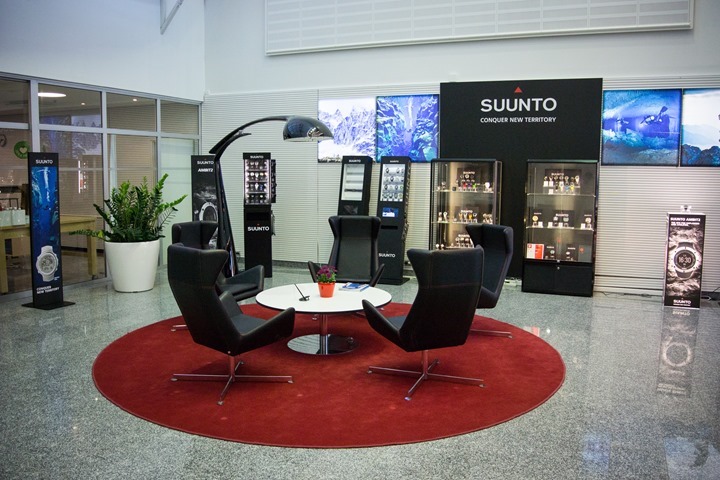
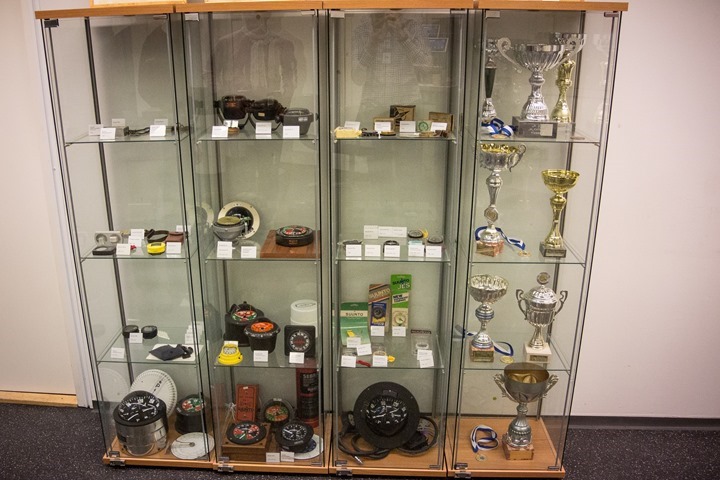
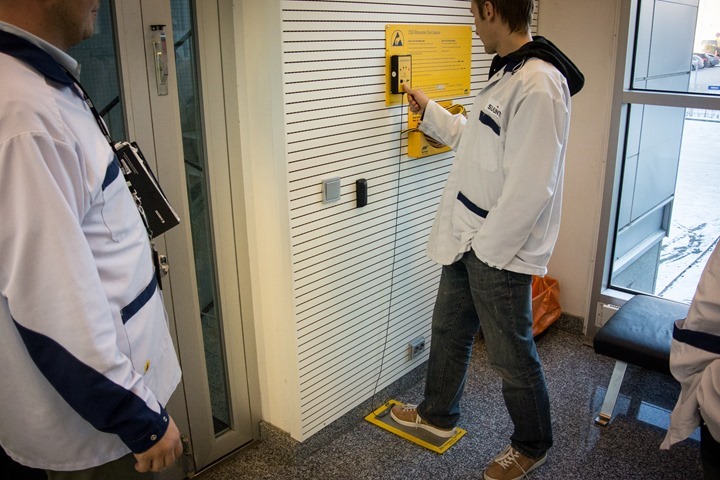
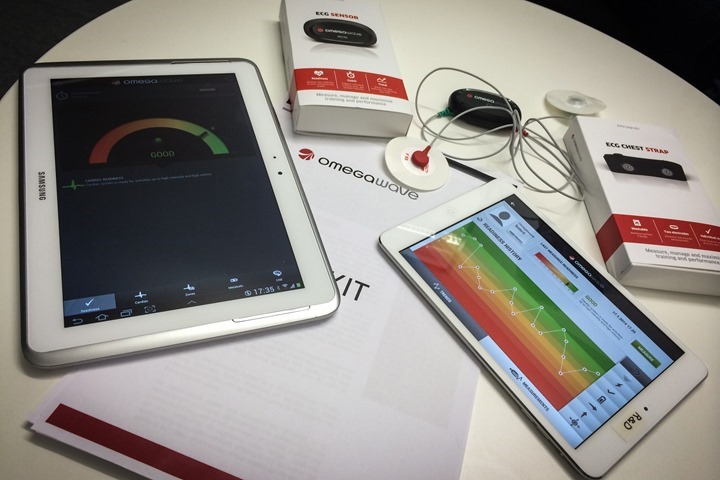
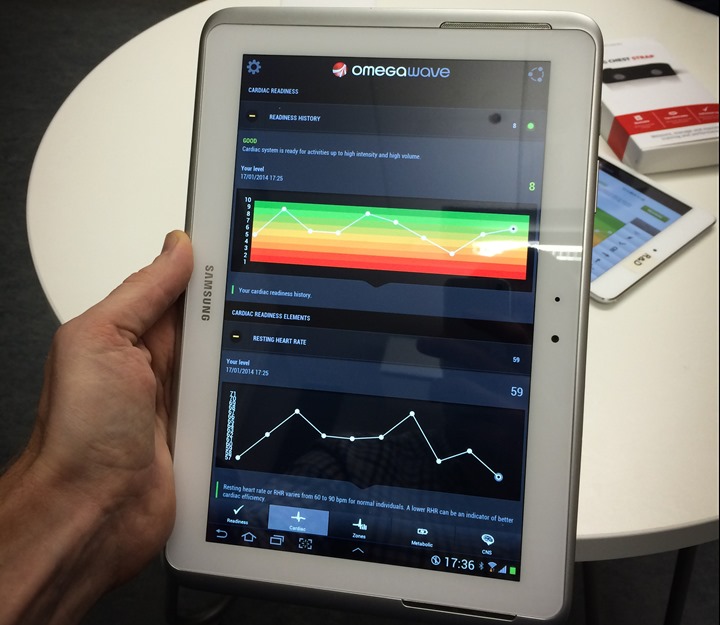
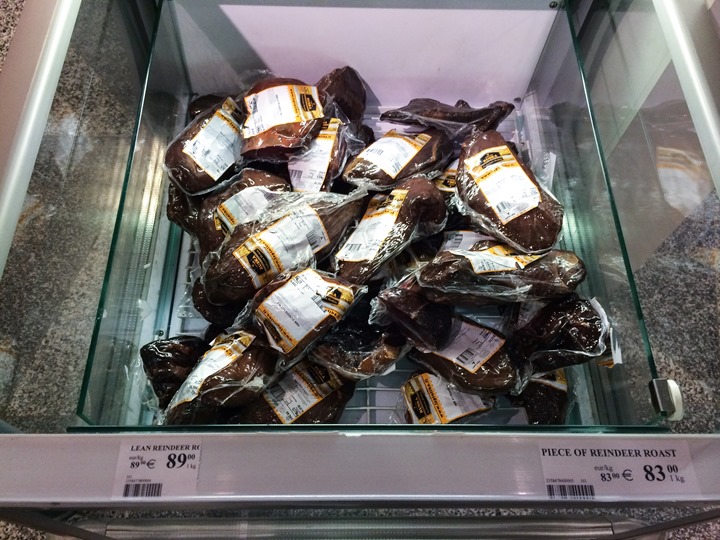
















Looking at the Omega Wave website, I believe the pricing is $49/year or $4.99/mo. Not both as stated in your article. I honestly think this unit sounds affordable for personal use.
Thats my understanding as well annual or monthly fee not both
Thanks all, updated.
As for affordability, it’s basically a $150 ‘entry fee’. While I think the front of the pack athlete won’t have an issue buying into that, I think that’s going to be hard to justify for middle or back of pack athletes. Which are ironically the same athletes that could probably benefit the most from it from understanding how to train smarter.
Regarding $150 entry fee. I like Anders below would like to know what is more affordable for a non-windows user?
TP premier is $120/year. And it doesn’t really measure your fatigue. It estimates it from your accumulated TSS, which in and of themselves are all estimates. Especially if you don’t have a power meter. (And apparently with some e-mail exchange with them, if you run intervals. That is rTSS is only valid for consistent effort runs.)
Firstbeat Athlete is $70 + cost of windows + cost of virtualization software. I have a 910XT, so no additional equipment there.
A new watch that supports it, Polar/Garmin 620 both > $150.
I did find a couple of native HRV tools that ran on Mac, one ran in a Matlab run time environment. And one that ran in R. But both of those sounded like statistics gathering tools. I believe the actual analysis with respect to training/recovery still needs to be done by the athlete.
My only real concern is the $49/year forever, and that currently the data is hostage on their web-site. They say they are working on an API. But it isn’t out yet.
Firstbeat Athlete doesn’t calculate fatigue, it just calculate how hard you worked on your runs so similar to how trainingpeaks works but less of a guess calculating work load. (In that training peaks also only looks at how hard you work)
Firstbeat Sport does the fatigue stuff but is way more pricey then this product.
What is this Fristbeat thing? I have heard of this before, but understood it was just another sports tracking/analyzing software like sporttracks or others.
I’ ve tried to check it out, but this fatigue R-R measuremnet thing made no sense to me…
thanks
I concur, either annual or monthly fees.
What? No covered fridge pix? Yer slackin’ Ray!
Is the Ploar H7 (ECG-accurate heart rate to any Bluetooth smart ready device) work with Omegawave?
Omegawave requires their proprietary sensor with the app, and the sensor only works with their app.
What are the best alternatives for measuring fatigue with a ordinary HR-strap?
I’ve seen Firstbeat which does this, but they only offer their tech in a Windows-application… except for the stuff they’ve done with Garmin for the FR620.
As @Mark notes below, there’s the iThlete app for $10, and also SweetBeat app (can’t remember the cost), both of which work on your phone and use a BTLE strap such as Polar or Viiiiva from 4iiii. Personally, while I have issues with Viiiiva’s data glitches that occur about 2+ hours into a run, it’s the better options since it does Ant+ and BTLE in the same strap. And their customer service is fantastic.
A great review Ray!
The next time you’re in Helsinki, drop me a line and I’ll show you some great cycling plus some reindeer stew.
(re questions here, I believe Firstbeat is from Helsinki as well; I also believe Polar has a way of measuring fatigue)
I struggled with the name Omegawave thinking it may have been inspired by a tribe of Nigerian nomads (you know, a bit like the Fugawi Tribe.) I just couldn’t get it to roll off my tongue smoothly, e.g. Oh-Meh-Gawa-vee etc. Then suddenly I saw it in two words – Omega Wave. Doh!
Hi Ray,
I’ve just one doubt. If everything in Suunto is made by hand in Finland, why, on my Suunto Quest, I can read “Made in China” even if “Designed in Finland”
Bye,
Marco.
Hmm, strange. They had stated that all product lines were except minor accessories were in-house and emphasized it multiple times. I’ll find out about the Quest, or if there is a secondary line there.
You can check it yourself 😉 Hope it’s visible. link to drive.google.com
My Ambit 2S says “Made in Finland” on the back.
Most of the products are made in Finland, i.e. all Ambits, all Dive computers. Some of the outdoor/fitness products are designed in Finland / made in China, i.e. Core, Quest and M-series watches.
Regarding Suunto. I’m hoping one of those future updates might be Bluetooth uploading to third party software as well as phone alerts to the suunto watch. I know you can’t say, but it would be great to see. I’m really looking for a do it all sports watch, but that means being able to have phone notifications.
Impressed that the Fins do (almost) everything in house. They do crank out some great products, from sailboats (Nautor Swan, Baltic) to electronics (and nice airports)!
Very interesting post, Ray. I have always used Oceanic dive computers, mostly because they’re a lot less expensive than Suuntos. But I’ve always lusted after the Suuntos and their better UI, and this makes me want one even more!
How does Omegawave differ from something like athlete, which also measures and tracks HRV, but which costs considerably less? The athlete app for iOS costs only $9.99 with no additional annual or monthly fees, and it uses commonly-available bluetooth heart rate straps like the Polar H7 (so zero marginal cost for the hardware if you already have one of these straps).
… that’s “ithlete” (another auto-correct victim here).
Thanks for the pointer to ithlete. That might be the solution I am looking for. I would still need to buy a BTLE strap. But They sell one for $80 + $10 app, and no subscription. That’s still under the $150 up front cost of the Omega Wave system.
Ray, have you looked at ithlete?
You can get a Polar H7 on Amazon for $64.95 (free shipping). It definitely works with the ithlete app, as well as other apps that support Bluetooth HRMs.
I’ll re-note the option of the Viiiiva HR strap which is both BTLE and Ant+ so that if you have Ant+ based equipment it can work with both. It’s a shade more expensive, but not by much.
Ray, is firstbeat teamed up with a Garmin FR620 going to do the same job as the Omegawave unit? I am not a front pack runner, but can see what you mean by middle pack runners benefitting. Haven’t pulled the trigger on the FR620 but if it can do both running watch and fitness watch, that can help soften the blow!
For those looking at various other products and comparisons – most of the other products track or do analysis with HRV to some degree (which is ultimately what Polar has done for some time, and Garmin with the 220/620). In cases like FirstBeat, it has previously done that with the data that Garmin recorded.
Ultimately – the singular reason I made my common around price is because of this. I’d like to understand better (through testing and comparison) how these products compare side by side to Omegawave. Especially since there are a slew of HRV-type products on the market with differing price points. Omegawave noted however that because their strap can give them higher quality data, they can thus give you higher quality data. Again, to what degree that matters is something I’ll look at a bit longer term.
Why does Omegawave charge a yearly/monthly fee? If my phone or tablet records/captures my data I am sure that it can analyze it. So what is it we are paying for?
It’s for the storage of the data in their online service.
Thanks Ray!
Ray, I tried to find the Omegawave product on the Clever Training site so you get credit for it, but can’t find it there. Any suggestions?
I don’t believe they sell it today. I’ll reach out to them and see if they can get it listed.
Is there any other place to go or would you get credit if I bought it directly?
No, I don’t see it listed on Amazon either. No worries though, I appreciate the thought!
I’ve already sent a note over to the CT guys about reaching out to Omegawave. Typically that takes a little bit of time (a day or two if a device company is really quick, weeks if the company isn’t so quick). I don’t know where the sales team of Omegawave fall there.
I will keep looking. Maybe Ricardo can set up something with clever training or even a direct link to order. I would love to order one soon!
Hi all,
First, a disclaimer – I work for Omegawave.
Ray, sorry to have missed your visit in Finland. I tried getting you over there previously, but you are a simply too busy guy! Now I moved to the US, in sunny San Diego, so if you are ever around these part, ping me!
I would like to pitch in some answers to the questions flying around here.
For David – The cloud storage is there for safekeeping, but as you noted, we are preparing an API that will allow you to download all data. We are also working on way for you guys to import/export data to other systems.
For Trevor – The Polar H7 is indeed accurate enough for this, and we are exploring ways of levering that. Stay tuned. Other HR monitors don’t have the accuracy for this analysis.
In relation to the cost, would you guys feel that a “life time subscription” be a good option? One time fee and be done with that?
I would love to hear you comments!
Ricardo, thanks for the post! I would love the life time subscription oltion! Any comments on how your product is better/different than the firstbeat teamed up with say a Garmin?
Stephen-H – I think that what Garmin/FirstBeat are doing is great. Using a GPS for acceleration, distance, pace, and HR without knowing if what you are doing is helpful or not is a great tool. Comparing FirstBeat to Omegawave is not a one-to-one affair. They do HRV analysis on your heart beat, and provide you with a metric for stress. What we do is a much deeper analysis on how your heart is beating in response to different stimuli. We do an HRV analysis for cardiac stress, and we recognise the state of recovery that your body is in right now (parasympathetic/sympathetic nervous system balance), that tells us how your body is behaving and adapting (or not) to stress. In addition, our belt does a full ECG analysis, and we take that detailed data and infer your HR at anaerobic threshold with a simple two minute, at rest, assessment. No more gas-exchange all out efforts on the bike to calculate that. Omegawave can also tell you the balance between your aerobic and anaerobic energy pathways, so you can figure out how training is affecting your different energy systems, and if your training is actually delivering the results you want.
In short! 🙂
Thanks Ricardo! I suspected as much. I’ve been all over your website and downloaded the sample app and it is very impressive! I would love to get started and order one, but it doesn’t seem Ray’s sponsor (Clever Training) carries it yet. Waiting on his response to see if there is a way to order this and still support his website, since I may never have heard of it if it wasn’t for his review. Sure appreciate your quick responses!
At least for me, there is the pricing where the product is cheap enough to play with so may as well try it and the expensive product that I need to know how useful it will really be before I invest in it. I’m not a serious athlete.
Hey Ray,
Previously, you had a “tip-jar” on the blog where readers could provide some kind of financial “thanks” for all your hard work. Is this no longer around? I’m dying to know what reindeer roast taste like, and was willing to pick up the tap. Just paypal your email account?
Yeah, I concur with Matt, reindeer-taster-fund-wise 🙂
Thanks for not forgetting your less technically-inclined readers, too!
Ricardo
I already have a Polar H7. I want to buy Omegawave’s service, but as you said in your post, the Polar H7 is accurate enough to use with your analytics. Why not offer Omegawave as a service only option? You could list on your website which heart rate sensors meet your accuracy requirements. As per Ray’s CES coverage, more and more heart rate hardware is coming from many companies.
Thanks
Ken
As the “other Ken,” I’ll second this.
Someone, somewhere needs to do an extensive post comparing all the HRV stuff out there, from the T6 to the iPhone apps to whatever. There are so many “but what about this option” questions that can be posed.
Thought I should point out that the cheap ($69) Firstbeat Athlete program doesn’t calculate fatigue, it just calculates how hard you worked on your runs and infers the fatigue. Firstbeat Sport does the fatigue stuff but is $399 per year or $999 for lifetime.
I’m guessing omegawave doesn’t track sleep or during sleep?
Seems like the new sleep tracker from Beddit (link to beddit.com) will do some HRV analysis while you sleep which means it can give you your fatigue level when you wake in the morning. Major advantage of being all automated with no need to attach anything like a HR strap as you sleep on the device. (the Indiegogo version I’m getting will be here in a few days and hopefully the android version of the app will be out soon too) Guessing the Withings one announced as CES might do the same as they seem to be going the same route for method of data collection.
Any chance you’re working with the Angel device (link to indiegogo.com) as they claim to have raw heart rate data which if true would give you more accuracy then a “normal” HR strap for your data input?
Ray, does this mean you finally think HRV is useful? 😉
From my perspective I see value in HRV, but I have challenges with how the data is presented, and whether or not it’s affordable and further – whether or not its consistent between products. Meaning, the fact that different companies give different ‘suggestions’ on what to do based on HRV data makes it less ideal. For example, Garmin on the FR220/FR620 using the HRV data for recovery will never actually tell you that you need to not run. It only gives you ‘feel good’ suggestions. Basically: It’s too kind.
Polar displays data differently as well.
In order for me to start seeing the value, the message needs to be largely consistent across the board. In the same way that if I use a power meter, that data is consistently displayed no matter the vendor I use. How I train with that data is up to me.
I’d look to look at a bunch of technologies concurrently and see how they shake out. It might be a good spring project. Right now I’m fairly backed up.
There is also this which they claim will do HRV but then not much info is out yet so could be real and good or could be vaporwear, don’t know. link to getqardio.com
The problem with the Garmin stuff is it seems to just be using HRV to judge how hard the workout was and ignoring the rest of the time so it really wouldn’t know how fatigued you are. Needs something that looks at HRV the rest of the day/night
Ray, would you consider inviting a guest contributor to do a piece on HRV? btw, I’m not volunteering for this, just suggesting that you might want to consider it to reduce your planned workload.
The stuff the Angel device is purportedly doing around heart rate analysis is very promising. The secret sauce will be in the software apps that use the device. I suspect that university researchers who will look at the device for extended HRV data collection will be more focused on providing the user with more data rather than the “feel good” suggestions that Ray noted. This will be different than the more fitness-based apps that we have seen thus far. The potential to assess sympathetic v. parasympathetic response will move forward the monitoring of stress: physical, mental and emotional. As someone who suffers from chronic stress, this is the area that I find most interesting. SweetBeat captures this information now but, as Eli noted in general, this is only a snapshot. The continuous monitoring will provide the user with a much better overview of where they are relative to training and other stresses.
Did you ask Suunto about their Moves count API? I’ve been trying to get a hold of someone that will give me accass to their API but no luck so far.
Yes, we talked about at it length, including software apps that are taking advantage of it today. Do you e-mail their API address?
Their support people gave me the Movescount marketing guy’s email. I’ve tried emailing a few times but never heard back.
Could you send me an e-mail with the API email you have?
Yup, just shot you a note. For others, the API address is here: link to twitter.com
Ray, slightly off topic but related to Suunto…
Do you have plans to test/review Ambit 2R? It would be interesting to learn what’s different from Ambit 2/2S.
Cool post, definitely going to check out Omegawave
No word on Suunto Ambit 2R on their factory?
link to forums.watchuseek.com
Maybe he is still under NDA?
Here is a bit more information about Ambit2 R:
link to blogs.militarytimes.com
Any word on the omegawave fitness product mentioned on their site (link to omegawave.com) that says “coming soon”? Can’t seem to find any information about it.
Maybe a review of/comparing ithlete and omegawave? are there other companies in the same market?
Firstbeat Sports sort of is, but an order of magnitude higher in cost at ~$1000+.
BioForce HRV seems to be based on the same platform as ithlete so seems more like a repackage of the same thing
Sweetbeat (http://www.sweetwaterhrv.com) and Tinke (link to zensorium.com) don’t seem aimed at athletic testing, but not sure.
also hoping for that review if it were to come one!!
Cheers
6co
Doesn’t seem like any will be at eurobike or interbike 🙁
🙁
Disclaimer – I work for Omegawave
Hi, thanks for the interest in our products!
The Omegawave Fitness product is, for lack of a better comment, coming soon! Expect some form of announcement in the coming weeks. That’s all I can say for now!
In terms of Interbike, I wanted to be there, but unfortunately, at this points in time we are terribly busy with other items in the company that prevent me from attending.
On the topic of comparison, I wouldn’t want to pitch in on this one, and so far, I haven’t seen any direct comparison between the products, as it would be unfair for them to be compared to us.
Please check a recent write up from StrengthCoach.com on the use of Omegawave – link to strengthcoach.com
Reach out if you have any questions – ricardo.velez(at)omegawave.com
Cheers!
Any update on using Omegawave? Seems to be a “Omegawave Personal” for iphone users that’s $149 a year and an Android one that does less and is $59 a year.